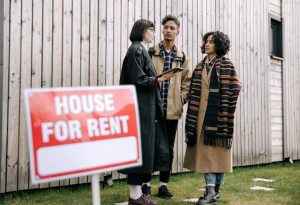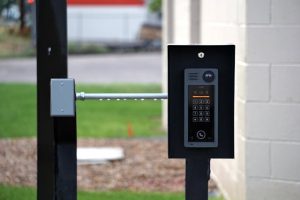Renting in an urban area is mostly like rural rentals, but with some key differences that you should know before signing a legally binding UK tenancy agreement.
In this post, we’ll highlight these factors to help you make the right housing decisions.
1. The Demand for Urban Housing

Experts predict that rent will rise by around 3% in 2025 across every property type. At the same time, more and more people are moving to urban areas for better jobs – with the ongoing cost-of-living crisis casting a large shadow.
This means there can be a lot of competition for every rental, especially in London and other big cities. Other prospective tenants may even price you out by offering to pay more rent, which not everyone can afford.
The closer you are to a CBD; the higher a rental’s prices – and the more competition you’ll likely face. You’re paying for the convenience, so it’s worth looking slightly further afield for something more affordable (but still nearby).
2. Amenities and Accessibility
To expand, urban rentals are generally quite close to a city’s CBD. Some might even be directly above a busy shop – and if they’re open late at night, the noise could make it harder to sleep.
Consider which shops and amenities you’ll definitely want nearby. You might, for example, want to be close to the train or bus station for easier commuting. If you’re renting with your family, you will also want a school to be close by.
Travel costs add up over time and could take up several hours a day. This alone could push you to move, especially if you live in a relatively small town and work in the city.
If you’re driving a petrol or diesel car in a big city, you might be subject to congestion or clean air charges. In London, the daily fee is £15. If this is too high for your financial situation, search for rentals outside the congestion charge zone.
3. 5 Tips for Negotiating a Fair Urban Rental Agreement

The biggest consideration for any rental, rural or urban, is the contract. It must be legally binding while addressing anything you’ve discussed with the landlord.
Here are five tips for getting the best legally binding UK tenancy agreement possible:
- Get a longer tenancy: Urban rental rates are always rising. Ask for a long-term contract of at least two years, and you should be safe from sudden price hikes for a while.
- Ask for a break clause: Any renter’s situation can change suddenly – especially in a big city. A 6-month break clause lets you move out early without a serious penalty.
- Check local urban rates: Look at the current market rates for nearby urban rentals, and if they’re lower than the ones you’re looking at, try to negotiate a better price.
- Ask about subletting: Urban homes are in high demand, and subletting helps you deal with rental costs. However, talk to your landlord first, or they might take legal action.
- Get everything in writing: Don’t leave anything to a verbal agreement; these are hard to prove. Make sure your contract has everything the landlord promised to include.
4. Popular Urban Property Types
Flats are the most common type of rental property in urban areas – in part due to their relatively small space requirements in densely populated areas. The most common varieties include:
- Standard 1–2-bedroom purpose-built flats
- Studio flats, which have everything in an open-plan space
- Converted flats, which were originally a single large house
Terraced housing is also popular in cities. These are multi-storey homes attached to a full street of similar houses. They’re usually quite narrow, which again makes them popular in high-density areas. In some cities, however, townhouses are beginning to replace terraces.
Detached homes are quite rare in the city; these are more suburban. When living in an urban area, being right next to other homes is almost unavoidable.
5. Security Concerns

It is, unfortunately, a fact that urban areas have higher crime rates on average. In fact, the police recently recorded 59 crimes per 1,000 people in rural areas compared to 99 per 1,000 people in urban ones.
This doesn’t mean living in an urban area is explicitly unsafe. However, it might be wise to set a curfew for yourself and stick to it, especially if you’ll be alone. You’ll generally be safer with friends and in well-lit areas, but even this isn’t foolproof.
Some cities, especially London, are actually known for high rates of pickpocketing. Be on guard for this, even if it’s daytime, and keep valuables out of easy reach. Always use bags with secure zips and possibly even RFID-blocking wallets.
Final Thoughts
Living in an urban area comes with quite a few complications. However, you can navigate these with a secure rental contract and good due diligence, letting you enjoy a long-term urban rental in peace.
Author Profile

- Blogger by Passion | Contributor to many Business Blogs in the United Kingdom | Fascinated to Write Blogs in Business & Startup Niches
Latest entries
 BusinessApril 11, 2025How Hiring a Student Could Be the Best Move Your Business Makes
BusinessApril 11, 2025How Hiring a Student Could Be the Best Move Your Business Makes Living in LondonApril 9, 20255 Key Considerations for Long-Term Urban Rentals
Living in LondonApril 9, 20255 Key Considerations for Long-Term Urban Rentals EntertainmentApril 3, 20257 Slot Games that are Popular with Londoners
EntertainmentApril 3, 20257 Slot Games that are Popular with Londoners EventsMarch 25, 2025EGR Awards 2025: London’s Comeback After Losing ICE
EventsMarch 25, 2025EGR Awards 2025: London’s Comeback After Losing ICE




